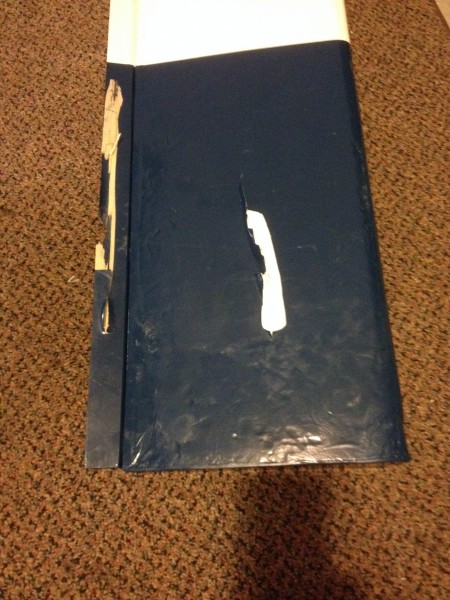Over the past couple weeks, I have attended a couple of events that were in whole or at least primarily float flying oriented. I enjoy being out near a lake or pond as they generally add to the natural beauty of the setting and flying off of water adds a different challenge to RC flight both from an aircraft handling approach and for the technical challenge of setting up a float plane to fly well. I highly recommend you take a shot at “float flying” if you have the opportunity. But be warned, like many things in RC, it can be addictive!
Lake Lemon – Monroe Counry RC
The first event was put on by the good folks at the local RC club in Bloomington, IN and was held at Lake Lemon just to the NW (I believe) of that city. The second was a couple weeks after and was an event put on by my “home” club, the Indianapolis RC Modelers. Below are a few picturess of the “goings on” from each. The Bloomington club had a good turnout with about 15 pilots I would guess, including 3 from my club… myself, Corey Lucas and Steve Woods. The venue is almost ideal with a nice big, low to the water dock as well as a huge body of water with almost no obstacles to contend with. They also had 2 retrieval “party barge” boats and served up a nice lunch as part of the registration fee of only $10 per person.
Here are some pictures from the event
Also while we were there, Steve tried his hand with his .120 size cub… Here’s a video clip of the takeoff… and landing.
No real damage was done… Steve had the engine running again after a brief dry down period. Did you see what went wrong? The consensus around here is the wake allowed the plane to leave the water a bit to soon and this added to Steve doing a bit to aggressive a pull up caused a stall… Better luck next time Steve!
Wilson’s Pond – Indy RC Modelers
The second event is one we have done every year for the last 5 or so, sometimes twice a year, and is held at a pond owned by the family of one of our members, Roy Wilson. It’s obviously not as open around the pond and the size of what you can fly there is a bit more limited as a result, but we consider ourselves lucky to have such a beautiful spot to enjoy ourselves and it is not difficult to fly off of for planes up to about 60 size or so. In the last couple years, we have not had much attendance… perhaps somewhat due to weather being “unkind” for several of the events and undoubtedly because we have few opportunities to do this sort of flying around here so getting a proper float plane setup isn’t the top priority of many folks. We all have to decide where best to spend our model budgets and something you won’t use often doesn’t rank highly with everyone. Another factor is that we have not really tried to promote the event as much as we did in past years so many folks just don’t know it’s going on.
A nice added attraction for this event is that there is a fairly nice field adjacent to the pond that you can fly most anything from so it is not limited to water based aircraft! I flew several planes and played with my air boat this year and had fun as always. I flew the PZ T28 on floats, the Carbon Cub (the micro version) as well as the Flyzone Beaver. The Beaver excels at this (once you re-engineer the water rudder) and I fly it primarily as a float plane so it doesn’t get a lot of flight time away from the water. My flying buddy, Corey, flew his Electric Nexstar from the water and his DLE 20 powered Cap Maniac from the runway. Here are some photos of the action.
Here’s a video clip of my Dumas Windy air boat eventually doing it’s signature spot spin manuever.
And one of Corey’s first landing at the pond with the Nexstar… ignore the first 5 seconds or so while I attempted to find the plane in the sky!
The basic idea here is: Water plus RC airplanes = lots of fun!! Try it, you’ll like it!

![IMG_1677[1]](http://flyrc.info/wp-content/uploads/2014/09/IMG_16771-800x600.jpg)
![IMG_1678[1]](http://flyrc.info/wp-content/uploads/2014/09/IMG_16781-800x600.jpg)
![IMG_1680[1]](http://flyrc.info/wp-content/uploads/2014/09/IMG_16801-800x600.jpg)
![IMG_1681[1]](http://flyrc.info/wp-content/uploads/2014/09/IMG_16811-800x600.jpg)
![IMG_1644[1]](http://flyrc.info/wp-content/uploads/2014/09/IMG_16441-800x600.jpg)
![IMG_1646[1]](http://flyrc.info/wp-content/uploads/2014/09/IMG_16461-800x600.jpg)
![IMG_1649[1]](http://flyrc.info/wp-content/uploads/2014/09/IMG_16491-800x600.jpg)
![IMG_1653[1]](http://flyrc.info/wp-content/uploads/2014/09/IMG_16531-800x600.jpg)
![IMG_1659[1]](http://flyrc.info/wp-content/uploads/2014/09/IMG_16591-800x600.jpg)
![IMG_1660[1]](http://flyrc.info/wp-content/uploads/2014/09/IMG_16601-800x600.jpg)

